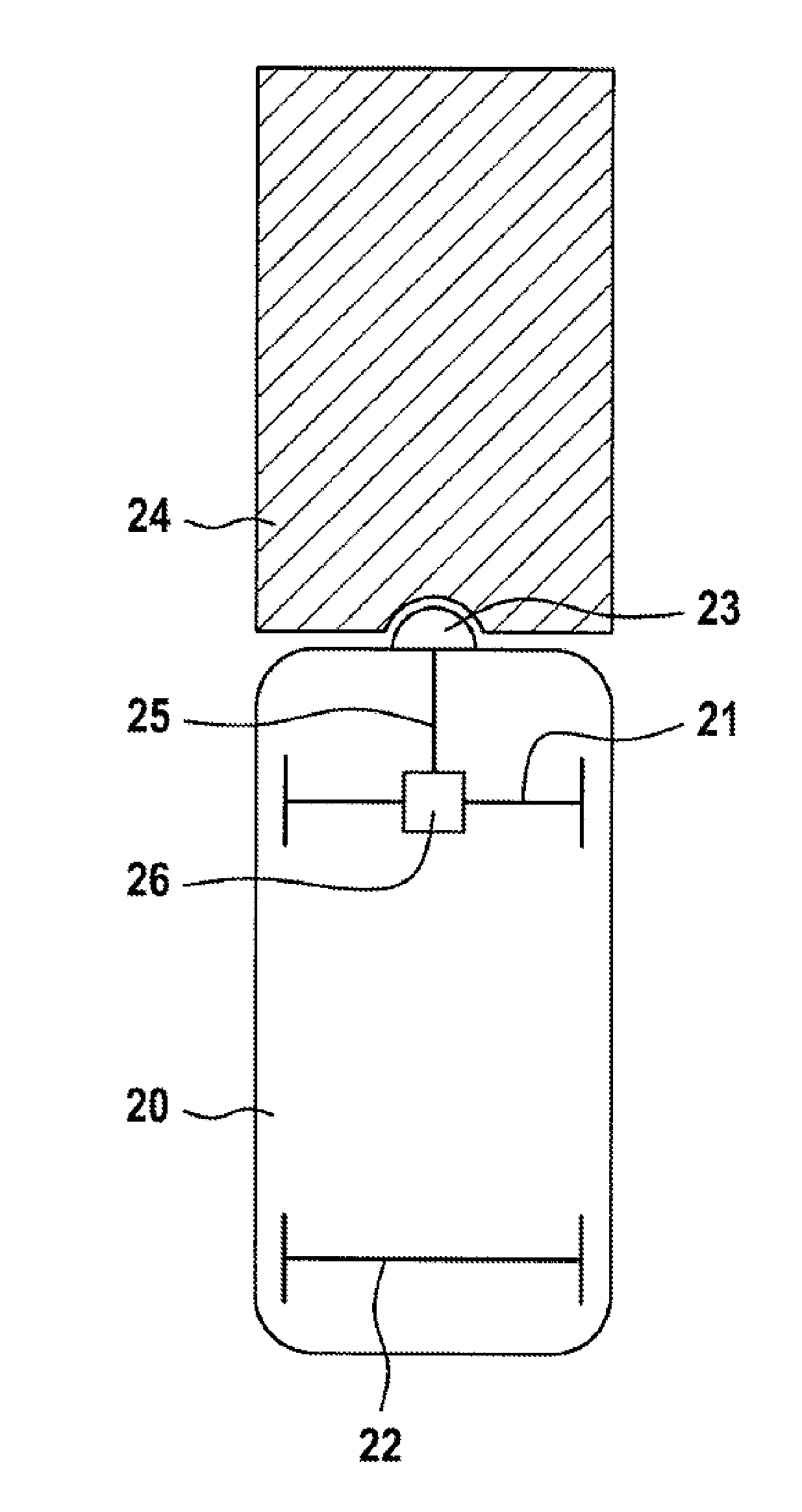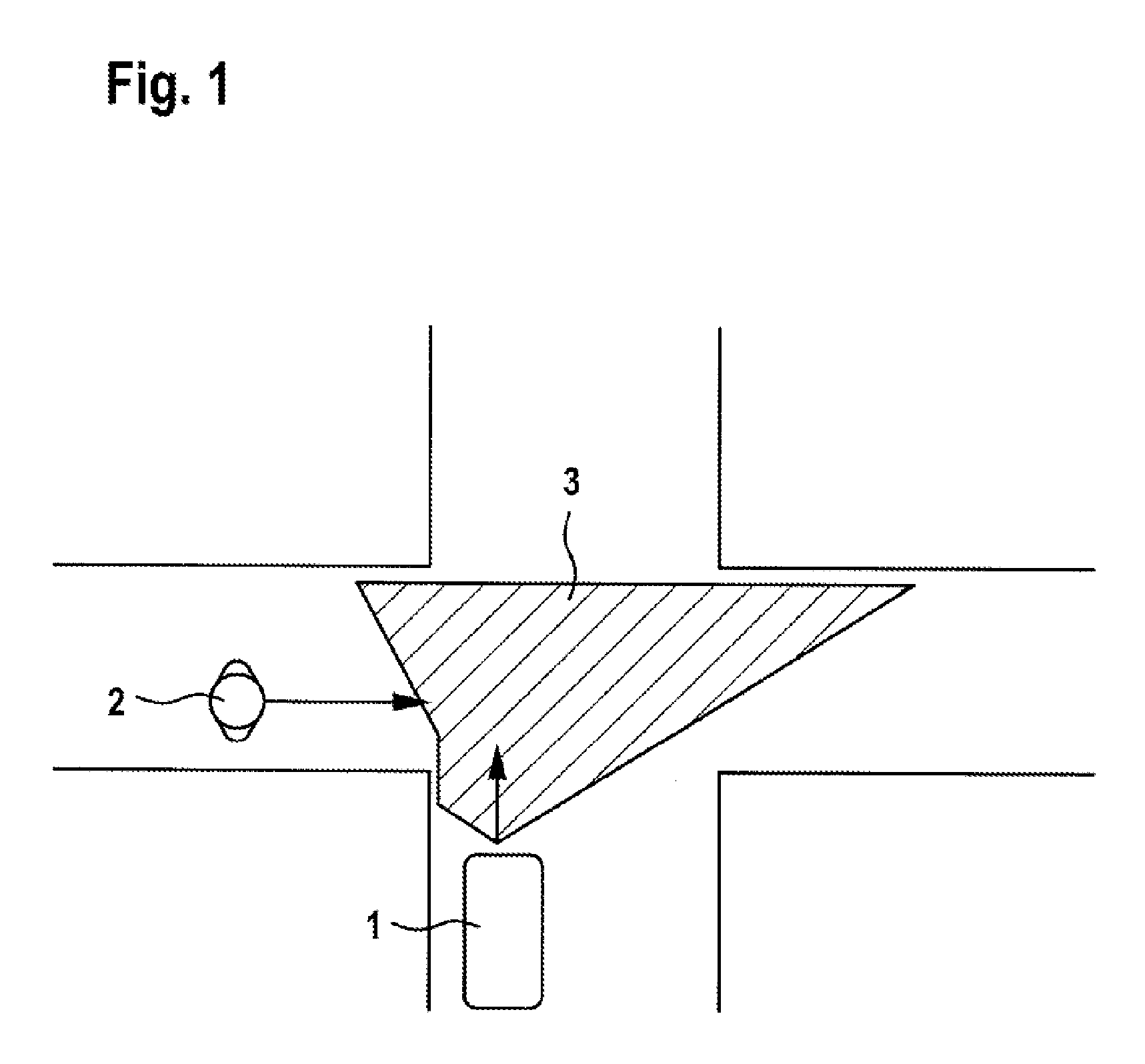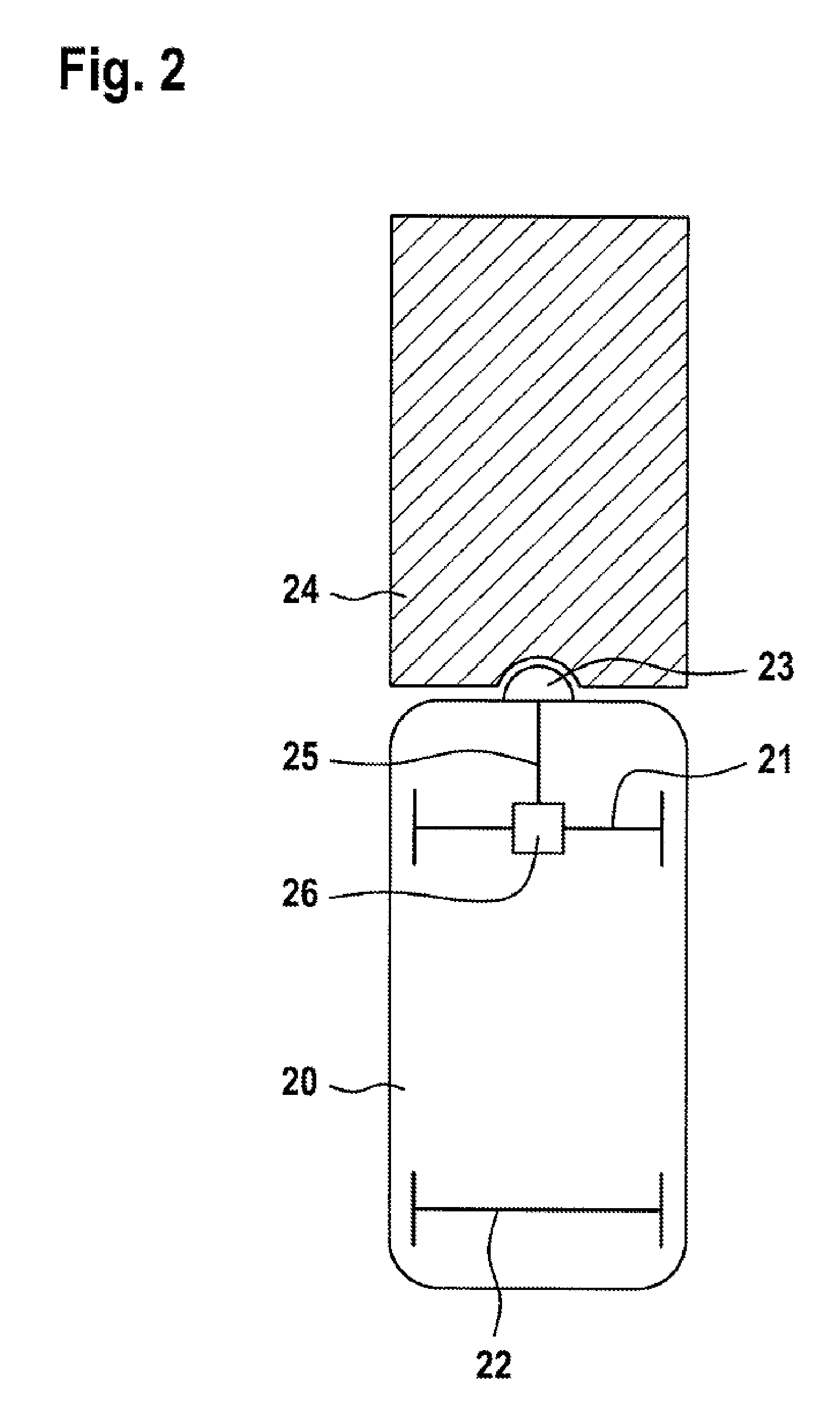Method for Operating a Self-Propelled Mobile Platform
a self-propelled, mobile platform technology, applied in the direction of braking systems, instruments, analogue processes for specific applications, etc., can solve the problems of limited vision field of mobile platform safety sensors, reduced speed, and oriented toward frontal obstacles, so as to reduce the maximum speed of the mobile platform, reduce the distance, and reduce the effect of speed
- Summary
- Abstract
- Description
- Claims
- Application Information
AI Technical Summary
Benefits of technology
Problems solved by technology
Method used
Image
Examples
Embodiment Construction
[0025]FIG. 1 illustrates a potentially hazardous situation in an intersection area, which may be overcome without actual hazards, with the aid of the method according to the present disclosure. The mobile platform 1 moves in an autonomous manner through a corridor system. In this case, it travels in the direction of the arrow into an intersection area. Simultaneously, a person 2 moves into this intersection area, the person 2 moving in a corridor which merges from the left with respect to the direction of travel of the mobile platform 1. The mobile platform 1 is equipped in the usual manner with a frontally oriented protective sensor. This protective sensor or safety sensor is, for example, a laser scanner or an ultrasonic sensor which scans the area in the direction of travel. Here, a safety zone is definable. If an obstacle, for example, a physical object or a person, is detected in this safety zone, this is detected by the mobile platform 1, and the mobile platform is able to res...
PUM
 Login to View More
Login to View More Abstract
Description
Claims
Application Information
 Login to View More
Login to View More - R&D
- Intellectual Property
- Life Sciences
- Materials
- Tech Scout
- Unparalleled Data Quality
- Higher Quality Content
- 60% Fewer Hallucinations
Browse by: Latest US Patents, China's latest patents, Technical Efficacy Thesaurus, Application Domain, Technology Topic, Popular Technical Reports.
© 2025 PatSnap. All rights reserved.Legal|Privacy policy|Modern Slavery Act Transparency Statement|Sitemap|About US| Contact US: help@patsnap.com



